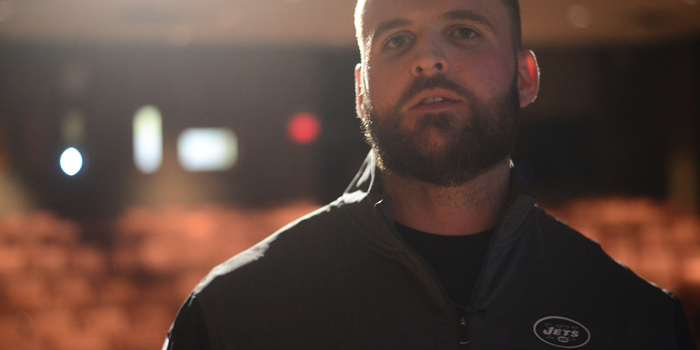
In the first part of his presentation at the 2017 elitefts Sports Performance Summit, New York Jets Head Strength and Conditioning Coach Justus Galac covered the goals of a strength and conditioning program, and how to go about addressing those goals. Now in part two, Galac moves to discuss his off-season, training camp, and in-season programming. He speaks about what it means to have a great plan and shares the training considerations vital to the success of the athlete.
Galac begins by going into great detail about the off-season program, addressing both the running and conditioning work, as well as what happens in the weight room. He shares what types of progressions they use, talks about the tempo bench and squat movements, and shows what days the upper and lower sessions are scheduled. He also explains the recovery aspects of the off-season program, including self-myofascial release, stretching, hot and cold tubs, nutrition, and rest.
WATCH: Justus Galac SPS Presentation — Goals of the S&C Program
He then discusses the setup of training camp and the assessments used to evaluate members of the team in the time between off-season and in-season phases. The goals of in-season training shifts in small ways, but remains focused on progressively increasing the strength of the athlete. Galac emphasizes that in-season training is not just about maintenance but is about progression, preventing injuries, and stressing the small stuff.
For instance, there is an "elevator training day" that happens the day after a game, on Monday, which helps players identify injuries they may have suffered in the game without realizing it. Additionally, Galac uses Bod Pods to help evaluate how a player improves or regresses from season to season. These indicators provide important feedback for the athlete.
Galac then moves on to give an extensive list of considerations for training. He addresses each of the follows factors that he says impact the success of his program:
- Off-season group size
- Education and opinions of players
- Time restraints as a result of the new NFL Collective Bargaining Agreement
- Educating athletes on nutrition
- Educating athletes on recovery
- Educating athletes on training
- Three months off after training
- Five weeks off before training camp
He then discusses the many components of having a great plan and how important it is to have your coaching staff on the same page. You must coach your coaches and ensure that each member of the staff understands the program and speaks with the same verbiage and the same commands. You must be consistent and you must keep it simple by relying on your core beliefs.
Once you know your general plan, Galac says you then have to look at the smaller details that build that plan. What are the pre-lift activities and how will your athletes be expected to perform them? Do you have the proper space, time, equipment, stations, and coaching help you need? Is the room set up in an optimal way for what you're trying to accomplish?
The final point in this segment of Galac's presentation is safety. Above all else, the first priority must be the safety of the athletes and the staff. Galac details a list of items to focus on for safety, including hydration, emergency procedures, staff assignments, and organization.
By the minute:
- (0:40) Off-season programming and progressions
- (3:35) Training camp and assessments
- (5:22) In-season programming
- (6:32) Training the day after the game and Bod Pods
- (9:17) Considerations of training
- (13:35) Having a great plan
- (17:01) Room setup and coaching help
- (18:29) Factors of safety









